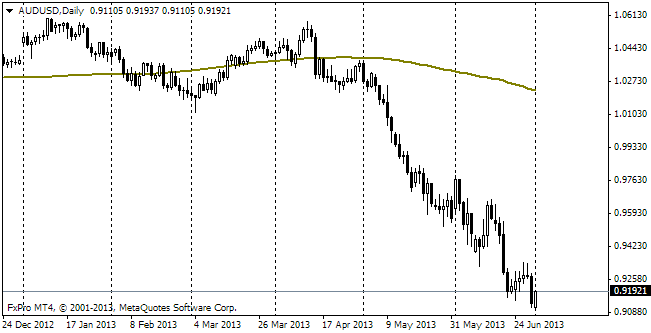EUR/usd
The pressure of USD is getting harder to resist, but the euro seems to cope well with it. Profit-taking in stock exchanges and easing of the situation with the overbought market contributed to decline of US indices , but at the same time aroused demand for dollars. The US currency grew against most of its counterparts yesterday. eurusd lost about 20 pips, closing the day at 1.3857, while during the day it went as low as 1.3830. Albeit small, this pullback can lay the basis for further growth, as buyers of the single currency and stocks can again appear in the market. But this is only if you consider intraday trading. In the grand scheme of things it would be more reasonable to think about selling on growth. Also it is quite possible that bulls will launch their final all-out attack before the release of the Fed's decision next week. As has already been mentioned, at the current levels the pair is in free flight, without any significant resistance right up to 1.42. At the same time, it is hardly possible that the euro will travel three figures and a half over a week. In our opinion, it can be expected that the currency will reach the preceding highs (1.3915), cast off the nearby stop-orders and only then go into a continuous reversal of a few months. The situation may be reconsidered in case of poor corporate reports, absence of buyers in the markets and also due to a sense of the coming end of QE and further increase of the interest rate in the USA.
GBP/USD
The British general interest rate has been also widely discussed lately. Some say that the BOE can start policy tightening even earlier than the USA. To such suppositions the MPC members assert that ‘the country is not yet overheated' (Carney) and that the rates will remain close to 2% in the medium term (Bean). The market has a reason to stick to its own forecasts, since in the recent years the BOE has proved itself as a poor forecaster. However, it should be kept in mind that the policy is still made in the Bank. Thus, if officials don't see the reason to increase the rate, it is senseless to count on it. Besides, the increased pound will be a real brake on inflation and the economy in the coming months.

USD/JPY
The yen is again in demand due to risk-aversion. The cautious selling of the pair may continue right up to 102.50/60. In February this rate served as a strong resistance, which now can easily turn into a support. Anyway, the major risk is posed by sharp decline of the markets, which can entail higher demand for the yen.

AUD/USD
The period of investors' benevolence to the aussie has been short and seems to have come to its end now. Since the end of the previous week the pair has been sold actively and, as a result, has fallen by two figures. Every day there is a new reason for selling. Yesterday it was decline of the Business Confidence Index and today – decrease in Consumer Sentiment. The falling of AUDNZD looks really remarkable. The pair is again in the area of its historic lows. Be careful – tonight there is a meeting of the RBNZ , which doesn't like when the Kiwi is too expensive.
